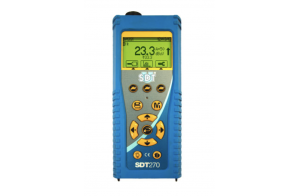COMPRESSED AIR LEAK MANAGEMENT

Compressed air is the fourth most commonly used source of energy in industry. Walk through any facility and see miles of pipe transporting this house-made energy source to its point of use. On this journey its fate is undecided. Will it arrive to deliver the intended value? Or is it lost along the way?
Why Do We Tolerate Leaks?
On average, 40% of compressed air goes to satisfying the false demand
of leaks. Why do we tolerate this waste in an otherwise efficient
economy? Lots of reasons.
- Low Safety Risk?—Compressed air Leaks are rarely considered a risk. Odorless and colorless, they don’t make a mess on the floor, and we can’t hear them over plant noise.
- Lack of Education—Many believe compressed air is free. Yet a leak costs a thousand times more than lights that are left on.
- Complacency—The reliability culture does not always extend to the compressor room. Energy efficiency must be written into an organization’s aims and objectives.
Facts and Figures Don’t Lie.
Air is free. Compressed air is not. It requires another energy source
to compress it. How much energy? Here’s the cost breakdown of a typical
compressor system:
- 13% CAPEX
- 12% Maintenance
-
75% Energy
A small compressed air leak can cost $2,000+/year. Consider that hundreds of leaks may exist in your facility. What are you waiting for?
Leak-Management Solution
Manage your leaks with ultrasound.
Their turbulent flow produces sounds that generate peaks in the 35kHz
to 40kHz range—exactly where SDT’s ultrasound detectors are engineered
to perform. SDT pinpoints leaks at their source, regardless of
background noise.
https://ludeca.com/blog/maintenance-tips/8836/compressed-air-leak-management-including-procedure-and-handbook/